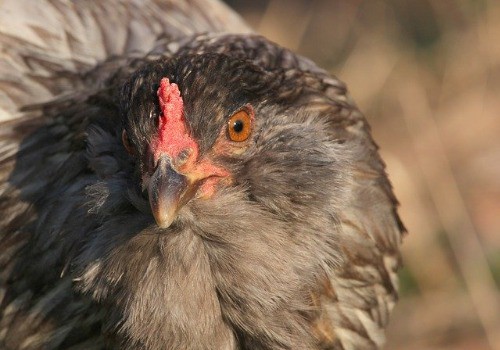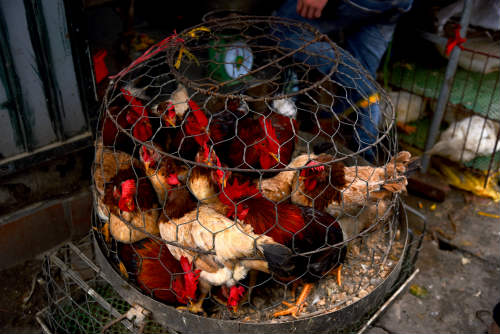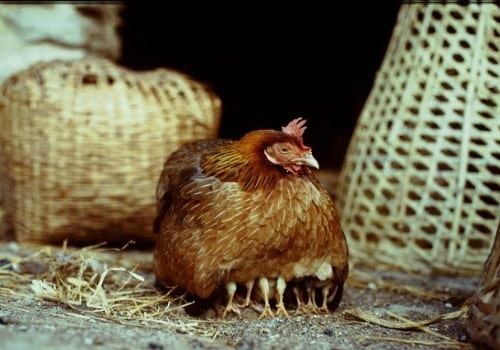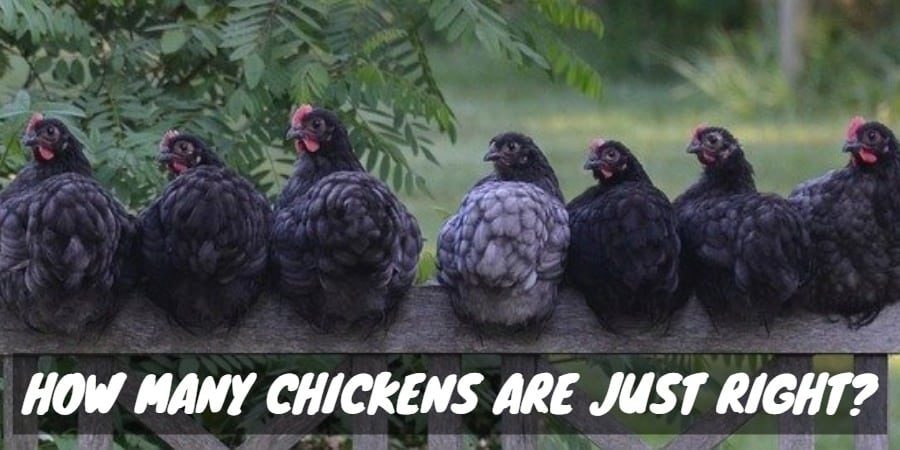The cost of raising chickens will vary depending on several factors, but you can get started with a backyard chicken-setup for less than $1,000, or $500 if you’re thrifty. Monthly maintenance for a handful of chickens usually costs around $20 per month after the initial setup period.
Factors that influence the cost of a backyard chicken farm include the initial cost of your hens, how many hens you intend to raise, what type of coop you’re setting up, how you feed your chickens and general husbandry practices. In general, well-kept chickens will more than make up for their expenses once egg production is factored in.
How Much Do Chickens Cost?
The first step to chicken farming is, of course, buying chickens. The cheapest way to get started is to buy day-old chicks. Raising young chicks will also help them to bond with you, yielding a tamer and more enjoyable pet. However, you may find it easier and more economical to buy older birds. Buying and hatching your own eggs is another option.
Buying Day Old Chicks
Most common chicken breeds will cost $3 to $5 per chick when purchased at this age. Rare breeds may cost up to $100 per chick, but there is little need to spend that much unless you intend to show them.
There are a few downsides to buying freshly hatched chicks. First, you’ll need to wait up to six months to start receiving eggs, which means you’ll spend money feeding and housing birds that are not producing any profit. Second, young chicks will require special husbandry. You’ll need to keep them in a brooder for the first six weeks. Plan on one square foot of brood space per chicken. A brooder can be purchased or made from recycled materials such as plastic tubs or crates. You’ll also need a heat lamp to keep the brooder and coop nice and warm while the chicks are young.
If you’re buying chicks, be sure to have them sexed so that you don’t end up with a set of roosters instead of hens.
Buying Ready-to-Lay Pullets

If you don’t want to wait several months for your chickens to start laying, you may want to spend a little more money to buy “started pullets,” which are older hens. Pullets can be moved directly into a coop, which saves you the expense of a brooder. They can also start laying eggs right away.
Individual pullets may cost between $20 to $50 depending on their age. Roosters are much cheaper, and you can often find a rooster for free if you want one for your flock. Keep an eye out for “free to a good home” ads.
Aside from cost, the disadvantage of pullets is that they will not be bonded to you. Depending on how they were reared, they may not be hand-tame and could be more difficult to keep. If you do decide to buy adult chickens, be sure to get them from a reputable source to ensure they are healthy.
Buying Fertilized Eggs
Hatching your own eggs is exciting, but it’s the least economical way to raise chickens. Fertilized hatching eggs generally cost $1 to $2 per egg, and they will need to be incubated and tended in order to hatch correctly. The incubator will cost at least $100, and you’ll need to factor in the time commitment involved with safely hatching the eggs as well. Once the eggs are hatched, you’ll need a brooder and heat lamp the same as you would with a day-old chick.
Hatching your own chickens is a gamble as there is no way to know what you’ll get. Some of the eggs you buy may be duds. You may also end up with nothing but roosters. Day-old chicks are a surer bet and cost just a little bit more.
If you’re just getting started with chickens, avoid buying eggs. Save the egg-hatching experience for later when you can breed your own chickens for free if you really want.
[amazon bestseller=”fertilized eggs for hatching”]
Cheapest Chickens for Beginners
Popular backyard chicken breeds are often the cheapest. When you’re first starting out, you’ll want to choose an easy breed to handle and one that will be a good layer. Fancy chicken breeds may be beautiful to look at, but they will cost more money to buy and may not be worth the expense.
Some of the most popular chicken breeds are also quite common and affordable:
- Rhode Island Red
- Golden Comet
- Buff Orpington
- Plymouth Rock
- Leghorn

These breeds can usually be obtained at a feed store or from a local breeder or chicken farmer. They are good all-purpose chickens for egg production and shouldn’t cost too much to buy or raise.
Bantam chicken breeds are smaller than other chickens and have become quite popular as pets. Their small size means that they eat less and require less space, which can reduce your maintenance costs. Bantam chickens are a favorite among city dwellers for this reason. However, bantam breeds are very trendy and may be more expensive to buy, so you’ll need to factor this cost into your budget.
Some of the fancy chicken breeds might be very expensive to buy, and certain breeds such as silkies require special upkeep and maintenance that will add to your husbandry costs. The most expensive chickens in the world, the Ayam Cemani, can cost up to $2,500 per bird! These exotic chickens are completely black and even yield black meat.
Unless you’re a hardcore chicken fancier, there is no need to spend hundreds or thousands of dollars on a rare or exotic chicken. Stick with the cheap and plentiful breeds and focus your money on providing the best care for your birds.
Chicken Start-Up Costs
Outside of the cost of the chickens themselves, a beginner will need to budget for start-up costs such as a coop, brooder, nesting boxes and any other necessary equipment. The cost of a coop is one of the biggest variables in raising birds as prices can vary dramatically. However, a good chicken coop will last for many years, so this is a one-time expense that will be earned back over the lifetime of your birds.
If you’re handy or have some carpentry skills, you can build your own chicken coop. If you use recycled materials such as wood pallets and leftover fencing, you could essentially make the coop for free. If you’d rather buy a pre-made coop, there are many on the market. The cheapest premade coops start around $100 and can cost upward of $1,000 or more for very large and fancy chicken mansions.

Aside from the coop itself, you’ll also need to set aside some money for feeders, waterers, nesting boxes and a place for the chickens to roost. All of these items can be purchased second-hand or made from recycled materials to keep your operating costs low. Your chickens certainly will not mind if their accessories are not top-of-the-line or expensive.
[amazon bestseller=”chicken waterer”]
Chickens are fairly hardy and self-sufficient birds, and they don’t need much to be happy. Whether you’re planning to keep chickens as pets or are hoping to profit from eggs or even meat sales, there are only a few things you’ll need to keep your flock happy and healthy:
- A chicken coop with an enclosed run or a safely fenced-in free-ranging space
- Nesting boxes where hens can lay their eggs
- Roosting bars for chickens to sleep on at night
- Feeders and waterers
- Chicken feed and scratch
- Miscellaneous veterinary care as needed
The most expensive part of raising chickens is setting up the coop, but there are ways to reduce those costs and keep your hens healthy even on a shoestring budget.
Saving Money on a Chicken Coop
A chicken coop doesn’t need to be fancy. Any enclosed structure with space for roosting and egg-laying will work for the coop itself. Most coops are made from wood, but you could just as easily build one from aluminum, vinyl or other durable materials. If you have some carpentry skills, you can build a chicken coop from recycled scrap materials or repurpose an old shed or even a dog house.
More important than the materials used or the appearance of the coop is how easy it is to clean. A clean coop will give happier, healthier chickens. Opt for a design that can be swept out easily and which will make egg collection simple. You’ll also want a coop secure enough to keep the chickens in at night and protect the flock from any predators such as coyotes or stray cats that might wander into your yard.
If you have a fenced-in yard and don’t mind allowing your chickens to free-range throughout the day, you can get by with a small coop. If you’d rather have an enclosed chicken run, you’ll need a larger coop design that can accommodate it. In either case, there are many commercial coops on the market for less than $200. Just be sure to select one large enough for the maximum number of chickens you want to raise so that you don’t have to upgrade it later if you decide to get more chickens.
Outside of the coop itself, you may need to pay extra for a few other items.
A nesting box is essential if you don’t want to waste time every day searching for scattered eggs. Hens will happily share a nesting box, so you only need one box for every three to four hens. Nesting boxes can be purchased prefabricated or made from recycled materials.
If you buy chicks, you’ll need a brooder and heat lamp. The brooder is a large box that keeps chicks secure and warm for their first six weeks of life. You can make a brooder out of a large storage tub or buy one for about $75.
If you buy eggs or intend to breed your own chickens, you’ll need an incubator. This will cost another $100 or so as well as the time investment involved in watching and hatching the eggs.
Saving Money on Chicken Feed

Once you’ve got a coop set up and have purchased your chickens, you’ll have minimal monthly upkeep expenses. Chickens require bedding in their coop and nesting boxes. Most people use wood shavings or straw, both of which can be purchased affordably from a feed store. The other thing you’ll need to pick up at the feed store is, of course, chicken food.
Chickens are omnivores who naturally subsist on a varied diet. If you allow your chickens to free-range in your yard, they’ll find plenty of things to eat including insects, weeds and even small lizards. Allowing your chickens to forage in the yard will cut down on their feeding costs and can help to keep your home pest-free, which is a lesser known but excellent advantage to keeping birds.
Unfortunately, free-ranging is not enough to keep a chicken well-fed, especially if you want to harvest eggs from your hens. Even free-range chickens will need to be fed a high-quality diet consisting of commercially designed chicken feed and scratch.
Commercial chicken feed is primarily made up of cereal grains such as wheat, barley and sorghum. These grains are then fortified with nutritional additives and protein sources like soybean meal or even bone meal. In general, the feed will be sold in pelleted form. This makes it easy to feed the chickens with minimal mess and spoilage.
An adult chicken will eat approximately 1/4 pound of feed per day. A 50 pound bag of chicken feed at the feed store or purchased online might cost you anywhere from $10 to $35 depending on the brand and quality. Depending on how many chickens you have, you may only need a bag of feed once a month or even every other month.
[amazon bestseller=”chicken feed 50lb”]
A chicken does not need anything other than commercial pellets. However, chickens will be happier if given a variety of things to enjoy:
- Free-ranging. As noted, chickens will enjoy foraging for their own snacks and can be helpful in eliminating insects and weeds from your yard.
- Scratch grains. “Chicken scratch” refers to cracked, rolled or whole grains that have been scattered across the ground. Chickens will scratch and peck at these grains, fulfilling their natural instinctive behavior. If your chickens don’t free-range in the yard, you’ll need to offer scratch grains in the chicken run as a form of dietary and mental enrichment.
- Grit. Chickens rely on grit to help break apart and digest the grains in their diet. In a natural environment, a chicken would come by grit naturally by eating small rocks and pebbles. In an enclosed chicken run, you may need to provide fine gravel or commercial grit from the feed store.
- Kitchen scraps. Peelings, leafy vegetables, bruised fruit, stale bread and other table scraps can be fed sparingly to chickens as a treat. Just be sure to avoid giving your chickens anything with egg or eggshell as it may give them a taste for egg, which can lead to breaking and eating eggs in the nest.
Supplementing your bird’s diet will help to reduce the cost of regular food and give your hens some variety. Eggs laid by well-fed hens with a diverse diet are also richer in taste and have more nutritional value, so it’s in your best interests to feed your hens well without breaking the bank.
How Much Will It Cost Me to Raise Chickens?

As noted above, your specific costs may vary significantly. Before starting your backyard chicken farm, you’ll want to shop around and compare the prices of feed, bedding, supplies and the chickens themselves.
For the purposes of a rough estimate, let’s say that you buy day-old chicks for $5 per chick and choose to buy four hens. That’s a $20 up-front cost for the chickens themselves. Set aside $100 for an affordable chicken coop and another $100 for miscellaneous supplies like a brooder, heat lamp and food trough.
Expect to pay about $20 per month for food and another $10 in bedding for your four hens. Because the chickens will not yield any eggs for the first six months, you can expect a total investment of $180 in upkeep, bringing the total cost of your starter chickens up to $400 for six months.
Once the chickens start to lay eggs, you can start to recover those costs by selling the eggs or simply keeping them for your own use. Four chickens can lay up to 120 eggs per month, or ten dozen. A dozen organic free-range backyard eggs can easily sell for $5 or more, earning you $50 per month in eggs. That’s a $20 per month profit above the cost of keeping the chickens.
Using these estimates, your backyard chickens will pay for themselves within less than two years. Most chickens remain productive layers for between five and seven years, making chicken-keeping profitable in the long run.
Of course, eggs are not the only value a chicken can provide. Chicken droppings make for excellent fertilizer that can be used in your home garden or even sold. If you have a rooster, you can sell fertilized eggs or hatch the eggs to sell your own chicks. Chickens can also be slaughtered and used for meat and feathers that can be sold or used at home.
Keeping all of that in mind, once all of the profits and expenses are tallied, keeping chickens may cost nothing or even make you money every month.
Conclusion
Well, that should do it. I tried to make this guide as verbose as I could so hopefully it answered your question (and a few more) concerning the costs associated with raising chickens.




